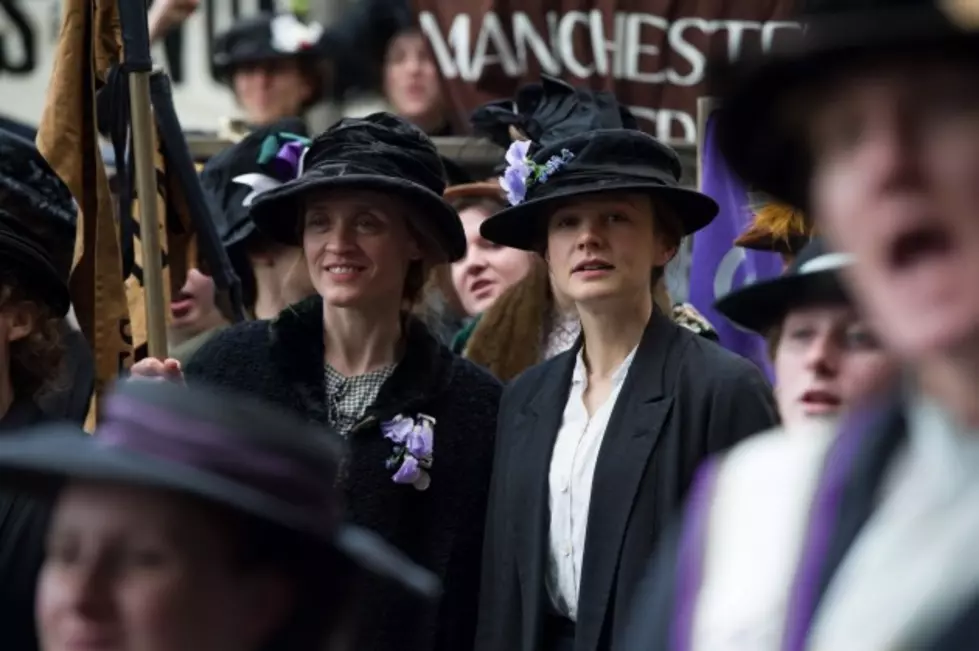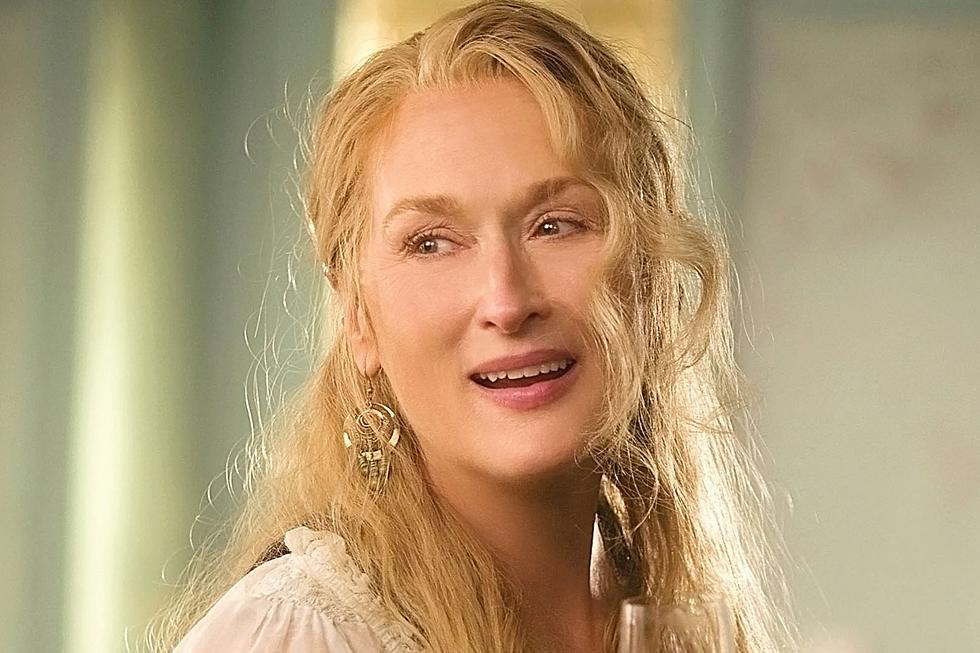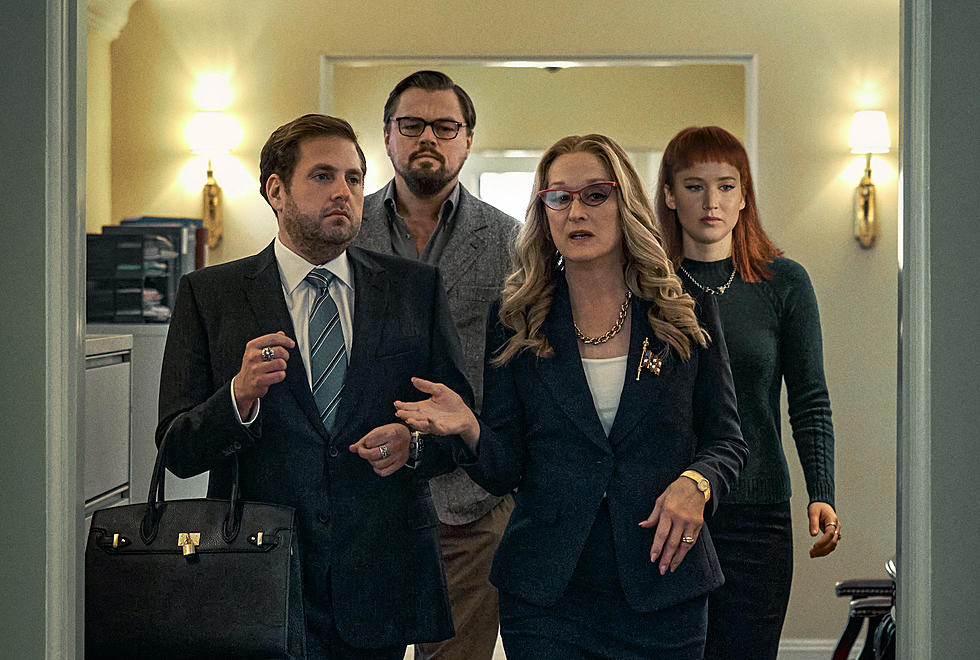
‘Suffragette’ Review: Carey Mulligan Fights For Women’s Rights in the Lifeless Historical Drama
It’s 1912 and Maud Watts (Carey Mulligan), a 26-year-old mother, is working as a laundress at a London factory, the same one she’s worked at since her early teens. Like the many other women in the sweltering warehouse, Maud works a third more hours than her husband (Ben Whishaw) and the other male employees, and makes considerably less. But this is the 20th century, a time where women were expected to do no more than birth children and bring home an income to feed those children. In Suffragette, screenwriter Abi Morgan (Shame, The Iron Lady) and director Sarah Gavron take us back to that era to remind us of the fight that eventually earned women the right to vote in the U.K. in 1928.
By the time the film opens in 1912, the Women’s Social and Political Union (WSPU), the activist organization formed by political leader Emmeline Pankhurst (portrayed by Meryl Streep in the briefest of cameos), is already well established. While groups of proactive mothers and wives have long fought for their rights, protested and served prison time, not all women are behind the cause. Maud learns about the movement firsthand when she’s caught in the midst of women throwing stones into store windows. Maud slowly joins other WSPU members, including fellow factory worker Violet (Anne-Marie Duff), Helena Bonham-Carter’s local doctor and fervent suffragette Edith Ellyn, inspired by the real-life Edith New, and well-off activist Alice Haughton (Romola Garai).
At first timid and passive, Maud is not your typical radical. She’s the type of woman who insists her male boss is “a good employer,” actively dismissing the implied notion that he abused and molested her as a girl, just as she catches him doing to a 12-year-old in the film. Maud is the character we follow as she grows more resistant to government repression and her husband’s sexism, and therefore the vessel by which we, the audience, come to empathize with the movie. It’s a useful device that many films employ to help viewers understand historical through the eyes of a likable, moral and persevering character. But Maud Watts wasn’t a real woman; she’s a fictional archetype sculpted as an amalgamation of the many real-life suffragettes who made an impact. It’s through use of this fractured vantage point that Suffragette becomes tiresome and didactic.
The first half of the film plays like a limp BBC television drama, both aesthetically and dramatically. Fraught with a dizzying, chaotic close-ups and messy editing, Gavron’s indecisive directing is more of a distraction than a service to the story. Even Morgan’s feeble script is clouded with exposition and forgettable dialogue. Whenever Brendan Gleeson’s Inspector Arthur Seed refers to the “dangerous” and “anarchist” suffragettes, whether to his fellow officers or when interrogating the women directly, his hostility comes off forced and inauthentic. Title cards explaining the the police’s aggressive and impudent relationship with the activists would’ve been smoother.
That’s partly what makes much of the film as grey and lifeless as the lethargic pedestrians wandering through the London streets. Maud’s own drawn out transformation from tepid laundress to ardent suffragette is stretched so thin that even Mulligan doesn’t have much to offer. Maud spends so much time sulking and stagnant that her character arouses more impatience than empathy. And while much credit is due to an actress who exercises restraint and stifled vigor in a performance, Mulligan is not one of them.
The one actress that keeps the story beating, and who’s unsurprisingly the best on-screen presence, is Bonham-Carter. Her Edith is the steadfast brains of the WSPU that keeps their fight active, teaching the women self-defense tactics (somewhat true to history) and organizing operations to get the media’s attention. Streep also lends a polished gravitas to the film, but unfortunately, other characters’ reference her Pankhurst more often than her total screen time. I can’t help but wonder if more Streep or a screenplay more tightly focused on the life of Pankhurst or another real-life figure could have bolstered Suffragette.
The latter half of the film finally gains momentum, lending Mulligan dramatic material to chew on as she enters prison and partners up with militant activist Emily Wilding Davidson (Natalie Press). The film culminates in an intense and upsetting finale at the famous Epsom Derby in 1913, depicting the real-life incident that galvanized the women’s suffrage movement. But as dramatic as the events of the film may be, it’s the text that scrolls on screen before the credits that’s the most rousing. In it, a timeline reflects the years various countries finally granted voting rights to women, all the way up to the this year’s triumph in Saudi Arabia.
While the existence of a film like Suffragette reminds us of the revolution's origins, and that we’re still fighting the battle for equal pay today, it’s the actual history behind the heroic movement that’s more affecting than the sum of Suffragette itself. That’s disappointing to admit for a film made by women, starring a cast of great women that’s about women. If anything, maybe Suffragette will inspire more people to read Jennifer Lawrence‘s essay on the Hollywood pay gap and incite more change. If not, well, at least we got some Streep.
More From ScreenCrush









